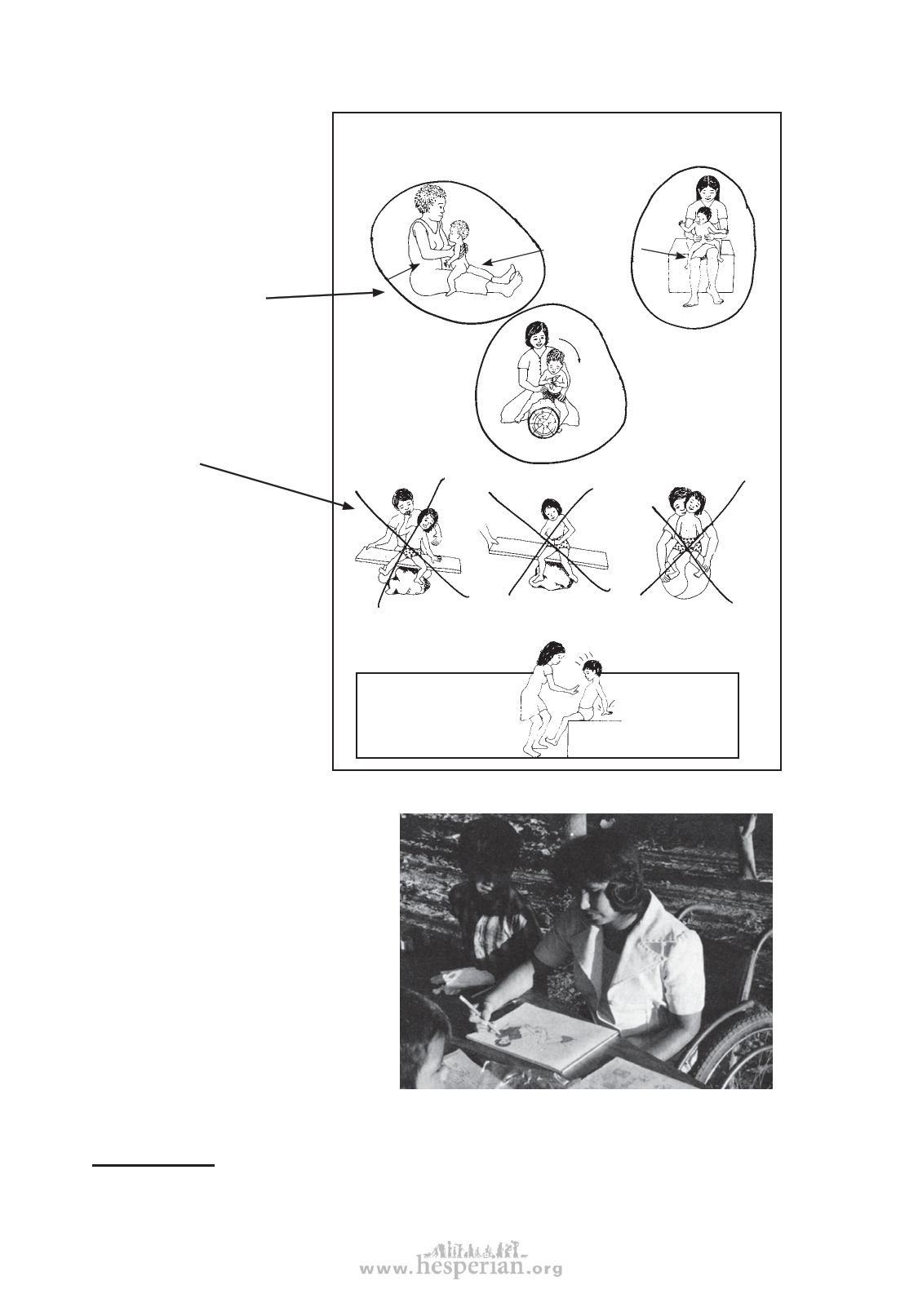
10 chapter 2
Marking the information that applies to the child
On any page or chapter
that you give to parents,
some of the information or
suggestions will apply more
than others to their child.
We suggest that you
circle the activities or
suggestions that would be
most helpful to the child
in his present condition
or level of development.
You could also put an “X”
through anything that should
not be done or might be
harmful for that child.
Here is an example. If
the child is spastic and
beginning to sit, the first
3 activities on p. 307 can
help her to improve balance
and to develop controlled
body movement. So circle
these. The next 3 activities
will still be too difficult and
could increase spasticity.
Put an “X” through these
so the family does not do
them.
To help your child gain balance sitting, first sit
her on your knees facing you.
DEVELOPMENT ACTIVITIES
Later, you can sit her facing out so that she can
see what is going on around her.
307
Hold her
loosely
so her
body can
adapt to
leaning.
You can do the same thing with the
child sitting on a log.
As he gets better balance,
move your hands down to
his hips and then thighs,
so that he depends less on
your support.
Slowly lift one knee to
lean her gently to one side.
Then the other, so that she
learns to bend her body to
stay seated.
Give him something to
hold so that he learns
to use his body and
not his arms to keep
his balance.
With an older child who has difficulty with balance, you can do
the same thing on a ‘tilt board’.
Or you can do the same
on a large ball.
At first let her catch
herself with her arms.
Later, see how long she can do
it holding her hands together.
Make it a game.
Tilt it to one side and
the other and also
forward and back.
Note: You can also do these
exercises by sitting the child on
a table and gently pushing him
backward, sideways, and forward.
But it is better to tip what he is
sitting on.
Pushing him causes him
to ‘catch himself’ from
falling with his arms.
Tilting him causes him
to use his body to keep
his balance, which is a
more advanced skill.
Making copies of pages can be
costly. Or you may have to go a long
way for them. Also, there will be
times when you want to give a family
written suggestions or drawings that
you have not copied in advance.
Perhaps some of the children or
young people who are at the village
center, either for rehabilitation or as
learners-and-workers, can help trace
drawings from the book. If they have
some artistic skill, they can make the
drawings larger, or make the child in
the drawing look like the child that
they are to be used with.*
Minerva, a girl with polio who is working and
learning at PROJIMO, helps adapt drawings from
this book to the needs of specific children.
*Ideas for drawing and for copying drawings at larger size are in Helping Health Workers Learn, p. 12-1 to 12-21.
(See p. 637.)
Disabled village Children